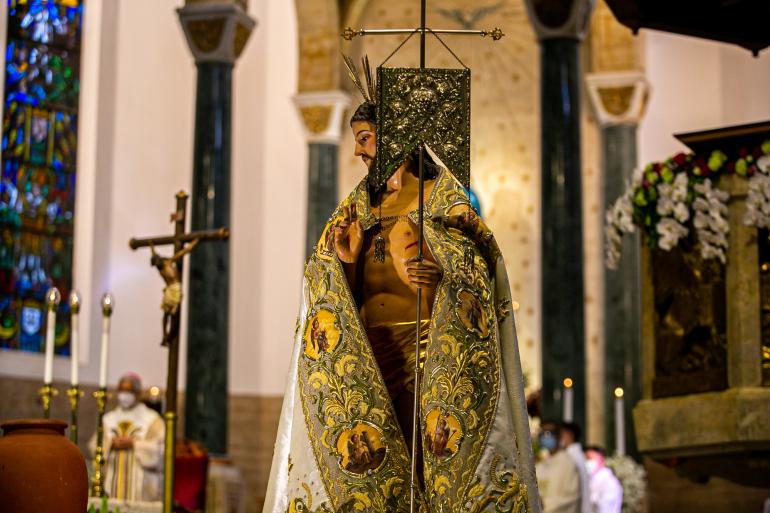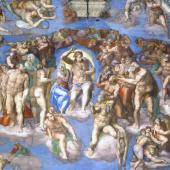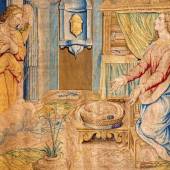The resurrection and life, too deep for words

George Plathottam, SDB
The resurrection of Christ and the post-resurrection appearances that we celebrate these days bring us before a profound mystery — a mystery not in the sense of a secret, something we read in detective stories or watch in thriller films. These of course quickly get resolved by the end of the book or the movie.
The mysteries of faith are quite different. They are far beyond reason. It is futile to try to plump their depths with reason, arguments, let alone words. When we are in front of a profound reality like the resurrection of Christ, for that matter any other reality that startles us, we are speechless. Be it a tragic death of someone dear to us, or an exhilarating news of an unexpected promotion, a cure which one who has faith will call a “miracle,” or others a “breakthrough” or “good luck.”
In front of such situations, we may cry, we may sigh, but we find it difficult to speak. We simply become speechless — we say “too deep for words.” In fact, we admit the fact that our verbal expressions and languages have limitations. Our experiences break through the boundaries of the spoken words. We cannot arrive at a verbal precision that fittingly describe our thoughts and emotions. It is so because the reality before us is too profound, too deep to fathom, too incomprehensible and indescribable.
I remember visiting the Church of St Sebastian’s in Katuwapitiya, Negombo, Sri Lanka, four months after the Easter Sunday blast that killed 114 people who had come to worship. We had a Mass celebrated in the church which was renovated within three months after the blast. At the entrance to the church, we saw a stone slab with all the names of those who died etched. Inside the Church we saw the statue of the risen Christ, now in a glass case, but with the whole image embedded with dried up pieces of flesh and blood of the blast victims — children, men and women, fathers and mothers who came to worship. I remembered the words of Isaiah 53:5: “He bore our wounds and our transgressions.” Literally, it made me think how our sufferings are united to the passion of Christ even in his glorious resurrection. How the mystery of the Lord’s resurrection is tinged with the suffering of his people. He continues to bear our sins and afflictions!
Next, we moved to the adjacent cemetery — it was too heart rending to read the writings on the tomb stones — names and dates of birth of innocent children, youth, men and women who came to worship on Easter Sunday. They are like the Holy Innocents killed by Herod in the Gospel stories around Christmas. How the joy of Christ’s birth was tinged by the grief of weeping Rachels! The story is being repeated in our day too. The joy of Easter was shattered by the broken bodies of the worshippers of the Risen Lord on that Easter Sunday morning; they now lay buried, with dried up flowers, little burning candles that flutter against the wind, trying to keep the flames alive.
Next, we visited Cardinal Malcom Ranjit, the Archbishop of Colombo, whose heart like that of all the Shepherds and leaders of the Church in Sri Lanka, keep grieving. Their pain and grief and the heart-rending stories they tell move you to tears.
One thing that he shared kept lingering in my mind. He told of families that bore the brunt of the tragedy, leaving just one member alive — the father or mother, or child. It depends on who went to the church and who stayed back home. A hundred and fourteen people who went to the Church that morning did not return. They found their final resting place adjacent to the church they went to worship.
But what about the living? The cardinal said many of them have been shocked into complete silence that they have not uttered a word since then. Too deep for words, too grief stricken. They simply stare at you, at the walls. He explained how best the church is trying to deal with the situation — trying to respond to each individual, one by one. No easy task, he reminded us.
Life is a mystery we cannot fully fathom or measure, let alone describe in words. The many experiences of life that unfold before us take us to new depths, new horizons. It takes us beyond the realm of the sensible world, we call it “the Other,” the Transcendent, what Paul would describe as “what no eye has seen, what no ear has heard, and what no human mind has conceived — the things God has prepared for those who love him (1 Corinthians 2:9).”
The post-resurrection encounters of the Apostles and disciples of Jesus are such profound experiences. Every one of them unfold in totally unexpected ways. They are not part of a carefully scripted story. The evidence for this comes from a careful reading of the post-resurrection apparitions of the Lord as described in the Gospels and the Acts. They are not the result of careful academic work, incidents stitched together to prepare a credible, convincing case. They are not attempts to prove or disprove something. The apparitions and much of what happened to the community after the Lord’s resurrection as described in the Acts, are simply spontaneous events, breaking out of nowhere. They startle the one who is confronted by that moment: Mary Magdalene thinks he is the gardener; the two disciples on the road to Emmaus imagine him to be a stranger. The Apostles imagine him to be a “Ghost.” At the Tiberias lakeside, they “recognize him” but do not dare to ask who he is, for they knew in the depths of their hearts that he is the Lord (John 21,12).
The bottom-line is that every mystery is to be encountered at a profoundly personal level, it has to be experienced at depth, at the inner recesses of one’s being, not simply told. One must be attuned to hear the “whispering of the Spirit,” the call of the depths. The intense wrestling of Jacob with the Stranger (Gen 32:24), the presence of God in the burning bush as experienced by Moses (Exodus 3:2), or as in the passing of Yahweh in the gentle wind as in Prophet Elijah on Mount Horeb (1 Kings 19:11-13) or at the Transfiguration of Jesus witnessed by the three disciples on Mount Tabor (Matthew 17:1-13).
In my study of linguistics, I used to wonder why the expression “reduced to writing” used to refer to an oral language or story being changed to a written format. The word “reduced” seemed to be somewhat derogatory, demeaning, inappropriate, so I thought. But after having lived with people who do not read or write but have fascinating, rich oral traditions, who tell stories that describe realities of life — creation of the world, presence of evil, birth, death and afterlife, I realized, trying to write these into text is indeed a “reduction,” an action of setting limits. Kudos to whoever chose the expression “reduced to writing.” That is a profound realization. Even as I write these thoughts or as at other times I write, I realize the limits of my knowledge, of the language and words. Every time I write I am “reducing” my thoughts and experiences “to writing.”
I must confess that even now I am indulging in an act of writing on something that my verbal or literary skills can’t fully support. I am limited by the boundaries of words and expressions to describe something that is far more deep and “inexpressible.” It is like trying to measure the ocean with a mug! If we go through such indescribable experiences of everyday realities of life, how much more “inexpressible” and “indescribable” would be the realities concerning God, the totally “Other,” the Transcendent.
The Hindu scriptures speak of “Niti, Niti,” literally meaning “not this, not this” to convey the need to eschew everything that is not “atman.” Niti is an attempt to negate all objects of consciousness, including thoughts and the mind, and to realize the non-dual awareness of reality. Buddhist tradition even went to the point of denying the existence of God. Buddhists consider it only as a distraction from pursuing enlightenment. Buddhism and Hinduism speak of the notion of “sunya” or emptiness. According to Hinduism, Brahman is without attributes and since sunya has zero attributes, Brahman is referred to as “sunya.” The yogic text, "Shiva Samhita," explains that the yogi who contemplates on “sunya” is absorbed into space and such contemplation leads to enlightenment.
But there are philosophers who choose denial — a total negation of all that which you cannot fathom simply as non-existent. For many rational philosophers mysteries that one is not able to comprehend do not exist. It is like denying the existence of New York or London because one does not know enough about them or have not seen them.
Christians celebrate life as well as death, because death is not the end of the journey. It is only a decisive milestone, however sudden, unexpected, tragic or painful it might be. The final destination is life with God — the resurrection. When we come face to face with the mystery of the Lord’s resurrection and our own death and destiny, we have to simply bow our heads in surrender because we cannot fathom with reason the mystery that is too profound, too deep for words.
Father George Plathottam, SDB, is executive secretary of the Office of Social Communication of the Federation of Asian Bishops Conferences. To read more of his articles visit https://gplath.wordpress.com
Radio Veritas Asia (RVA), a media platform of the Catholic Church, aims to share Christ. RVA started in 1969 as a continental Catholic radio station to serve Asian countries in their respective local language, thus earning the tag “the Voice of Asian Christianity.” Responding to the emerging context, RVA embraced media platforms to connect with the global Asian audience via its 21 language websites and various social media platforms.














